The ancient ruins of Kiev in the drawings by Abraham van Westerfeld.
Dutch artist Abraham van Westerveld (1620/21 -- 1692) in 1651 he accompanied the army of the Lithuanian Hetman Janusz Radziwill.
The Hetman of the army made a trip to Kiev, and the artist made several drawings of the city at the time.
These drawings are the sole document by which we can see how the city looked in the mid 17-century.
And on the title page we see the overgrown ruins of magnificent buildings.
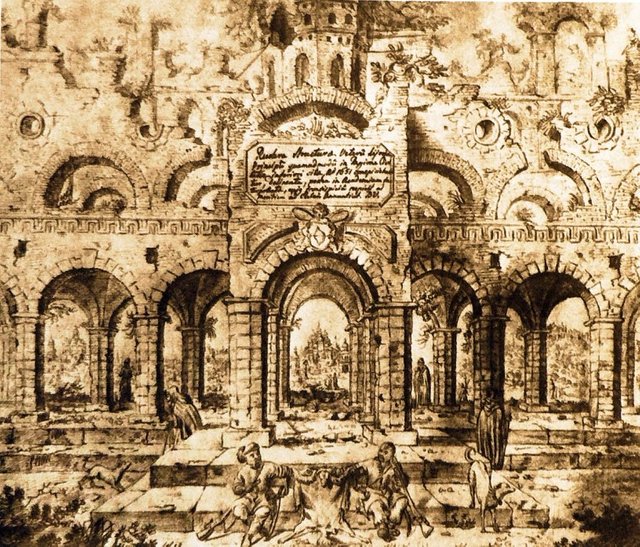
It is believed that this is mainly images of the ruins of the Hagia Sophia. Although there is a drawing where the Cathedral is depicted in a relatively good condition.
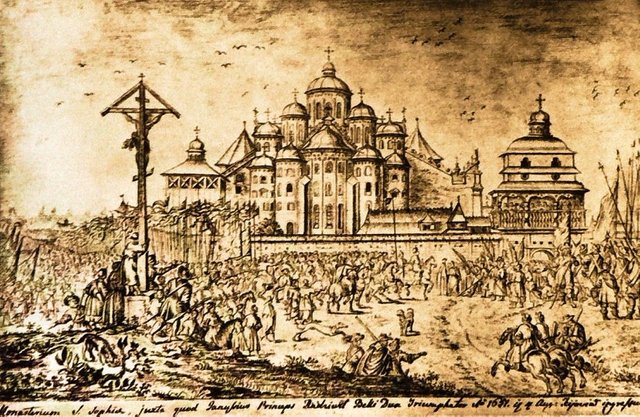
Here the Cathedral is quite intact. Or is this drawing not Westerfeld?
There are some drawings that supposedly depict the ruins of this Cathedral. Because what other facilities they are simply not attributed. Or it is necessary to assume that in Kiev there were other buildings in size is not inferior to St. Sophia Cathedral. Here's an example picture that supposedly shows the ruins of the galleries of the Cathedral.
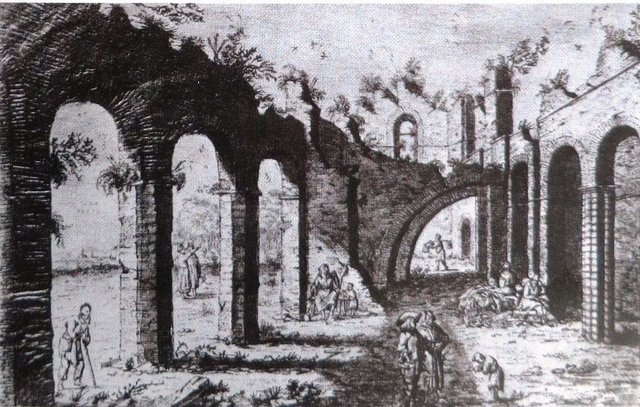
Personally, I think it is quite controversial. Here are a couple of drawings of the gallery of the Cathedral.
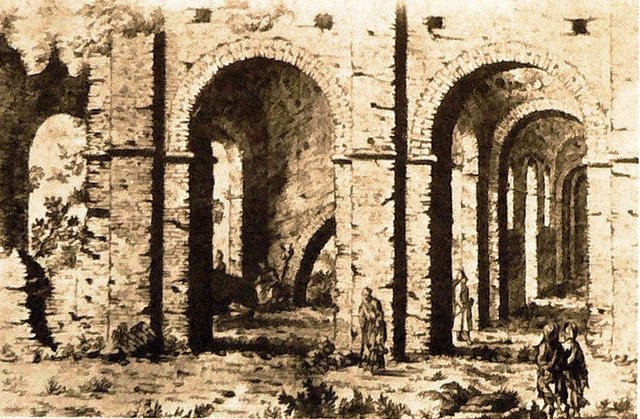
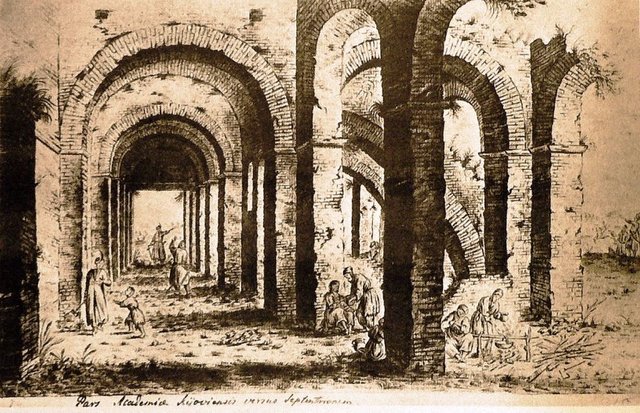
Children are running around, people looking at the remains of strange buildings. Just as we, when we go on tourist trips to see the ruins of the Greek temples.
Tower to a wall, too, referred to the ruins of the Hagia Sophia.
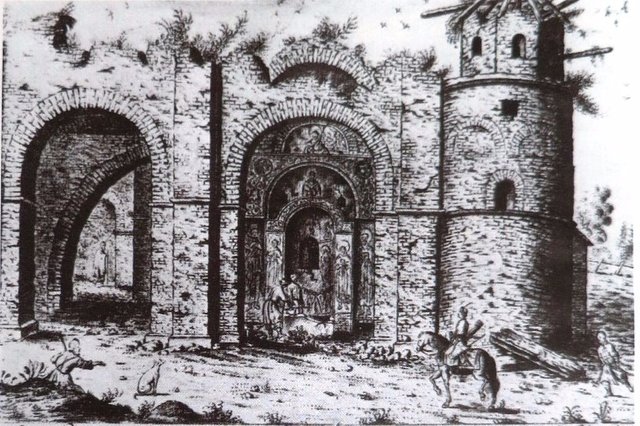
In this album there are several drawings that could not be attributed to any buildings.
The figure, which refers to the ruins of an unknown Church.
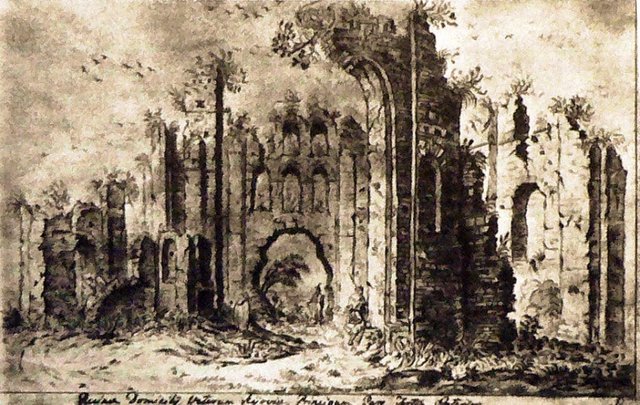
I have, somehow, an Association with photos destroyed in the bombing of Dresden.
And generally the impression that the whole Kiev is in ruins.
Here is a drawing of one of the unknown temple.
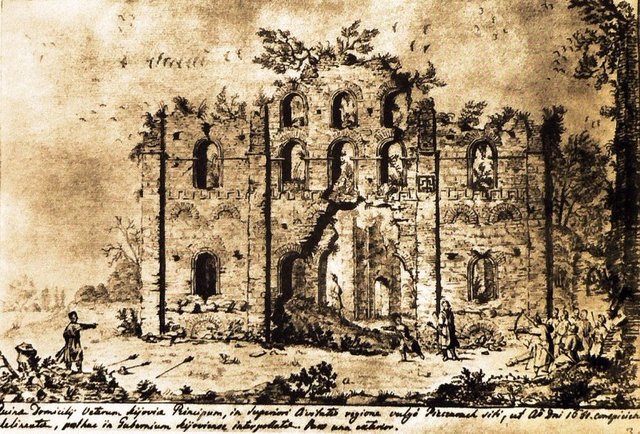
Judging by the trees growing on the walls, in this condition these buildings there are at least 50 years.
People walk among the ruins, have fun. Live a separate life, it is not trying to restore something.
Another unknown temple in ruins.
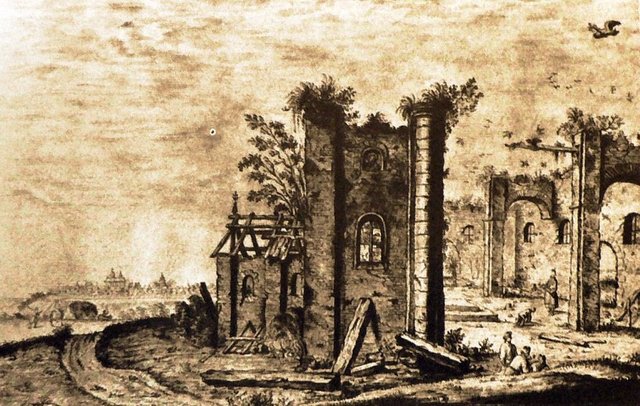
Some ruins still recognized well-known Church buildings. Here the ruins of the Church of the Fedorov.
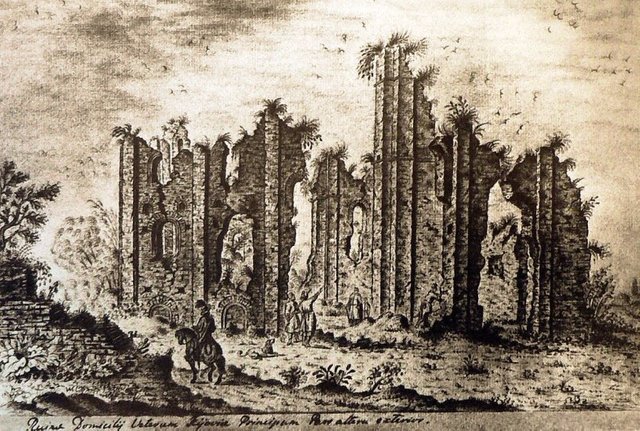
In Kiev, when there were many temples you can see from the description this city composed of Polish diplomat Rheingold by Heidenstam (1553 -- 1620) in 1596.
...Remained, however, monuments of the former greatness: the wall around the town, and in it the gates of an ancient structure all posledenie is so high that two carts (wlocznie), put on one another, do not reach their tops. In the city not a few destroyed temples, all of which were of the Greek rite. Remains hitherto one of them is St. Sophia, but in such a pitiful appearance that the services therein is not performed...
A bit surprising is another statement of this chronicler.
For several centuries the princes of Kiev were masters of all Russia, as that which is now called Moscow, and that which hitherto called Rus. Ruled by the princes to the Black sea and the Danube. Their capital was Kiev. When it was built, how long there is to be times of Colchis and Aeneas, known to close down the distant past and the indifference of historians...
Firstly, for some reason, there is a division into at least two Rus (or Russia). After all, at the time of writing this manuscript, the Rus had been one. Ivan the terrible by the end of his reign (1584)all won.
Was conquered Kazan and Astrakhan khanate, joined Western Siberia, the don Cossacks, Bashkirs, the land of the Nogai Horde. Thus, when Ivan IV the increase in the territory of Russia amounted to almost 100 %, from 2.8 million km2 to 5.4 million km2 by the end of his reign, the Russian state was larger than the rest of Europe.
What about the "other Russia", writes Hagenstein (by the way strange name for a Polish diplomat)?
And why he argues that in the late 16th century, the history of Kiev is completely unknown?
Current historians it is absolutely known and understood.
And don't call Hagenstein uneducated person.
In 1566, he entered the University of königsberg, 1571, studied in Wittenberg, 1577 — in the University of Padua.
Apparently in the universities of that time to work with historical sources is not taught.
The fact that virtually all of Kiev was in ruins, you can understand another statement of this pole with German roots.
There are also other monuments and ruins. Huge ramparts and walls indicate that the city should be ever been very crowded and great...
....Above the town is dominated by a wooden castle, but not worth the name of the castle. He completely abandoned and almost totally rotted away...
Again, twenty-five. What do you mean "when-something was crowded and great."
In 1596 Kiev is not crowded or what? And not great?
As it is not very hard to believe in it.
But the wall around the city was really in a deplorable state. That looked so Golden gate for example.
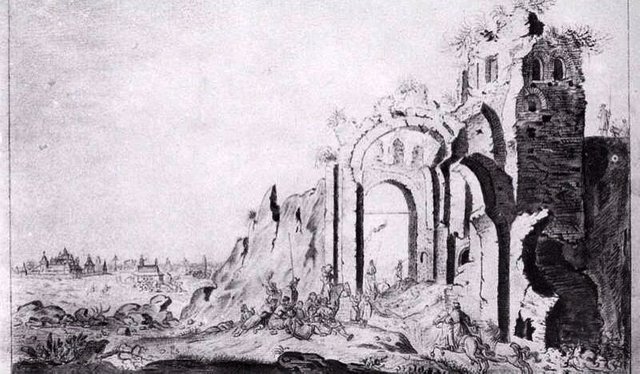
The question remains who destroyed it all. Basically it is a reference to Batu Khan, who, in 1240, passing from Mongolia over 4,500 km, attacked Kiev. In the attack and destroyed most of the temples. Why is Khan so much wanted to destroy everything is not explained.
Version is more than controversial. I remember in the post-revolutionary newsreel, when the Bolsheviks began destroying temples, they were blown up. And this is not always possible to do the first time. All the same, the thickness of the walls of the temples were in the center of one meter.
About the destruction of the Hagia Sophia in Wikipedia there is written very vague.
In 1240 Sophia Cathedral was looted by soldiers of Batu. After what remained of the Metropolitan residence until the end of the XIII century, when the Kievan Metropolitan chair was moved in the Vladimir Principality. When Metropolitan Cyril II (1242-1280) Cathedral repaired and orderly. In the years 1385-1390, Metropolitan Cyprian re-established it, then it is more than three and a half centuries, was in ruins, although it continued to operate. In 1596 the Cathedral goes to the Unitarian Church, in 1633 gathered Kievan Metropolitan Peter (Mogila), who restored the Cathedral and founded upon it a monastery.
It turns out no one was destroyed, just three hundred and fifty years was in desolation. But the service continued.
That is, the bricks fell on the head, but nobody was paying attention? Strange priests lived in those days.
And what about the drawings Westerfeld?
The ruins of a Cathedral he painted?
That's an immense amount of work.
Besides, are you from Kiev?
no I'm not from Kiev
okay :)